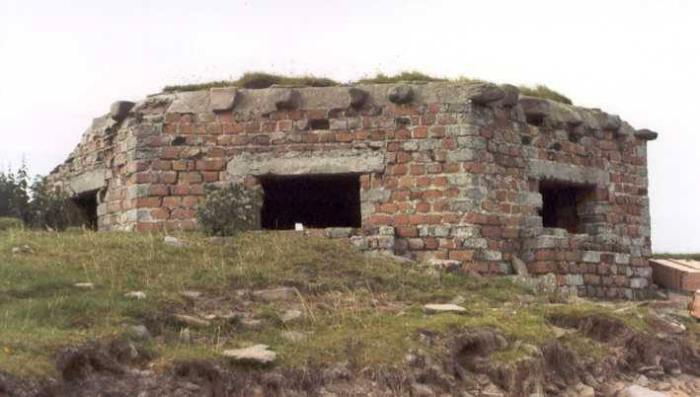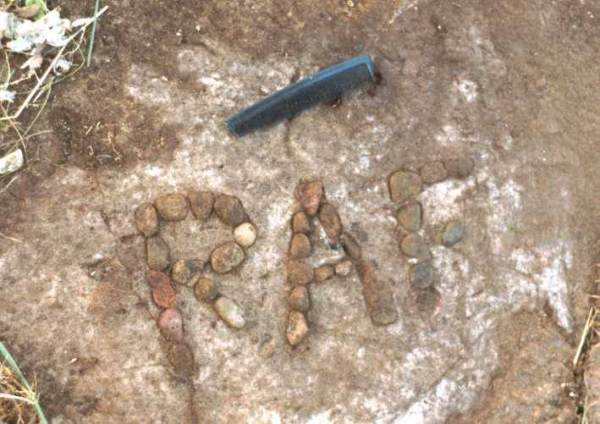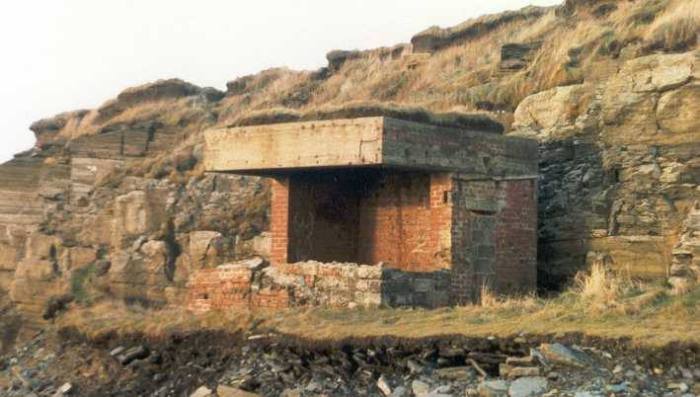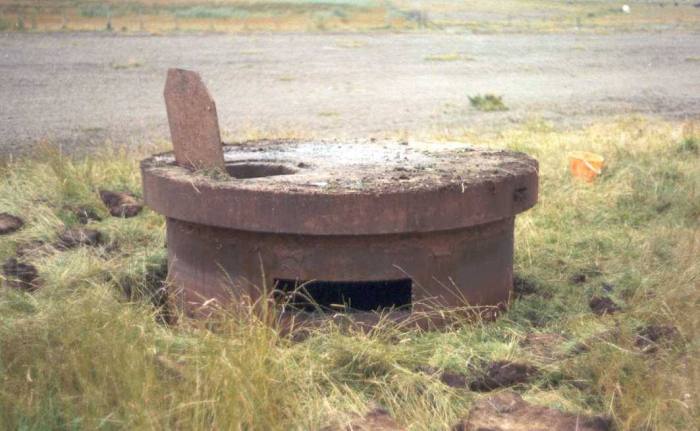 | Caithness.Org | Community | Business | Entertainment | Caithness... | Tourist Info | Site Map |
• Advertising • Chat Room • Contact Us • Kids Links • Links • Messageboard • News - Local & Scottish • News - UK & News Links • About / Contact Us • Submissions |
• Bookshop • Business Index & News • Jobs • Property For Sale • Property For Rent • Shop • Sutherland Business Index |
• Fishing • Fun Stuff • George, The Saga • Horses • Local Galas • Music • Pub Guide • Sport Index • What's On In Caithness |
• General Information • B & Bs • Backpackers • Caravan & Camping • Ferries • Getting Here • Holiday Letting • Hotels • Orkney • Pentland Firth • Sutherland • Taxis |
| N E W S F E E D S >>> |
|
Caithness Field Club Bulletin |
|
WW2 Defences in Caithness (Editorial Note: The following is an abridged version of a detailed account of WW2 defences in Caithness. The full text may be obtained from the Author o from the Editor of this Bulletin. The account is divided into two sections. The first part deals with the ground defences and the second part, which will appear in the next issue of the Bulletin, covers air defences) [Transcriber's note: The photos in the Bulletin were in black & white; some did not print too well. As the original colour photos were available, both the editor at the time and the current editor have agreed that these could be reproduced here instead. Nothing else in the Bulletin article has been changed.] The remoteness of northern Scotland belies its one time strategic importance and from the outbreak of WW2 Caithness found itself in the front line. With the fleet anchorage in Scapa Flow only 20 miles away, itself an important strategic target; but, with the German occupation of Norway, the military authorities were fearful of a limited invasion here in Caithness. This would not only deny the fleet its safe anchorage but also hinder our ability to patrol northern coastal waters and could have significantly affected the outcome of the Battle of Atlantic. Thus the threat of invasion was taken very seriously and an enormous amount of time, expense and effort was taken to provide Caithness with adequate defences to counter this perceived threat. Responsibility for defence rested mainly with the army and the RAF. The army undertook the construction of static defences at all vulnerable areas in the low lying coastal strip between Reay and Wick to prevent any sea-borne landing and troops were garrisoned around the country to man these defences. The RAF built radar stations to provide early warning of the approach of airborne invaders and airfields from which aircraft could he sent to attack. The most common of these defences still to be seen are the anti-tank obstacles. These came in two types; large blocks of concrete about 4ft.square by 5ft. high, and pimples (commonly known as Dragons Teeth) which are a truncated square pyramid of 3ft. square base and 3ft. high. These two types were often used together, a single row of blocks, edge-on, behind an offset double row of pimples, although in some cases either one or the other is used by itself. The most impressive stretch of anti-tank obstacles is undoubtedly that at the north end of Reiss beach where an uninterrupted line stretches almost half a mile southwards from Keiss village. The north end of Freswick bay also has a well-preserved line where the layout described above can clearly be seen. Murkle bay also has a well-reserved stretch of pimples which curve around the headland in a triple row set into the slope at the top of the beach. There are also anti-tank obstacles at Burnside and Dunnet beach and Thurso beach also had some but these are now gone. In addition to these measures, Reiss beach was also equipped with an extensive minefield and a flame barrage around the mouth of the Burn of Wester. The flame barrage was designed to flood an area of beach with a flammable mixture of oil and petrol which would be ignited as an invading force approached the beach. The flammable mixture was held in large tanks situated at the back of the dunes to the south side of the burn. It would be pumped from here through a small pump room along a network of pipes laid under the sand to emerge from nozzles spread along the beach near the low water line. The tanks are now gone and there is little to show where they were located. Not many of these flame barrages were installed in Britain and only a few of these ever became operational; Reiss was one of those that did; none was used in anger. The minefield, reputedly the largest in the UK at the time (1940), stretched the length of the dunes and was made up mostly of anti-tank mines, with anti-personnel scattered in between. After the war most of these mines were cleared and destroyed by German POWS, but due to the shifting nature of the dunes it is possible that there may yet be some live ones waiting to be found. To prevent aircraft or gliders landing on areas of suitable ground, such as beaches and fields, anti-aircraft poles and ditches were used. Anti-aircraft poles were simply wooden poles about 10ft. long mounted in concrete. Used mainly on beaches, such as Dunnet and Reiss, they were distributed over the beach just below high water mark and many can still be seen as wooden stumps protruding above the sand or from the large lumps of concrete into which they were fixed. These beaches also had miles of concertina barbed wire and tubular scaffolding obstacles stretched along them. Anti-aircraft ditches were shallow trenches about 2-3 ft. deep, with the spoil mounded up at intervals along the edges. They were dug across most of the fields and flat areas of farmland around the county. They were especially plentiful around the airfields at Castletown, Skitten and Wick and on Noss Head. One can still be seen at Tansfield (Castletown) in the field behind the house. The other well known defensive building is the pillbox. Although dozens of these structures were built in Caithness most have now disappeared. The popular assumption that they were built haphazardly to a single design is misplaced. Pillboxes were carefully sited to defend vulnerable areas or sites, beaches, airfields, coastal batteries, radar stations, harbours etc., and were used in conjunction with other defences. WW2 pillboxes generally conform to drawings prepared by a department of the War Office and are usually identified by a Type No. Three types were encountered in Caithness: A regular hexagon with walls approximately 6ft. long, designed for infantry with rifles and light machine guns; Hexagonal, with a rear wall 24 ft. long and adjoining walls which meet at right angles, designed for infantry with rifles and light/medium machine guns. A large concrete slab table round the inside was for supporting machine guns and the ones found at Reiss had unusually large rectangular embrasures. A variant was square, with protected entrance annex and mountings for Vickers medium machine gun in Turbull muzzle pivot mountings; Large hexagon, with an internally accessed open area in the centre for a light AA weapon, designed for infantry with rifles and light machine guns. Pillboxes are invariably of reinforced concrete, shuttered with whatever material was conveniently to hand. Many pillboxes used brick shuttering which was left in place after the concrete had set, giving the misleading appearance of a brick built structure. A pillbox, set atop the Bishops Palace at Burnside to defend the Transit Camp at Thurso, still survives.
Reiss beach had many pillboxes, placed every 400 yards along the beach. Most of these have long since collapsed or become buried but two remain to the north of Keiss village.
One overlooking Keiss harbour has now been partly deconstructed and made into a viewpoint with a bench. To the south end of the beach, at Ackergillshore harbour, one is still in use as a store shed and a short way further round towards Noss, a rather impressive looking one is perched on the cliff top looking north across the sweep of Sinclair's Bay. RAF Castletown was ringed with some eight or nine pillboxes, the only survivors are in front of the old grain tower at Thurdistoft farm and a half-demolished type which lies beside the Greenland road. Castletown also had its own artillery piece, although this was completely unofficial. It took the form of a 4.7" naval gun "acquired" from a naval sloop that had run aground in bad weather. The then commanding officer of RAF Castletown, Wing Commander David Atcherely, an enthusiastic if somewhat unconventional character always keen to exploit any opportunity to improve defences, had a platform built at the western end of Dunnet beach and the gun mounted so as to give enfilading fire across the beach and shore line. Practice shots were fired at a target mounted on the cliffs at Dunnet head. Naval authorities eventually reclaimed the gun when Atcherley overstepped the mark by trying to requisition a fresh supply of ammunition from the Admiralty.
The concrete apron with the inset ring of mounting bolts is still there with the letters RAF neatly picked out with pebbles in one corner. RAF Wick was also ringed with pillboxes, three of these are still in good condition and can be found on the airfield's western boundary behind the houses at Ackergill. Further along the road beside Upper Ackergill can be seen a good example of a strongpost. On the airfield itself are two unusual type pillboxes, facing inwards, and covering the runways and landing ground. Wick also had a ring of defences thrown up around the town's perimeter, barbed wire entanglements and machine gun positions strengthened every so often with pillboxes, some nine in total. To the best of my knowledge none of these pillboxes has survived. Wick harbour had its own defences in the form of four pillboxes and a Coast Battery. The one existing pillbox can be seen built into the bank of the north shore. The Coast Battery, situated on North Head below Broadhaven, mounted two 6in. ex-naval guns. The last of the battery buildings have recently disappeared under a new housing development, the only relic is a Coast Artillery Search Light (CASL) emplacement, built of red brick, below the battery site.
There were other unusual types of pillbox, with special functions, which are worth mentioning as examples found in Caithness. The 'Norcon' pillbox was simply a short length of 6ift. diameter concrete drainage pipe with embrasures cut around one end. These fitted onto standard pipes to form a one-man pillbox. These can be found at the main gate of RAF Skitten and behind Castlehill House gate lodge in Castletown. The Alan-Williams turret was a domed steel cupola, with openings in the side and top, which rotated through 360 degrees on a steel base. This could mount almost any type of machine gun of the day in either a land or anti-aircraft role. These were installed to my certain knowledge at Castletown and Skitten. The Castletown example was restored to working condition some years ago and can he seen in the field behind Lochside cottage.
The Pickett-Hamilton retractable fort was intended for airfield protection. The forts spent most of their life underground, the roof being level with the runway surface and able to support the weight of a medium sized aircraft taxiing over it. They were usually sited at the intersections of the runways and when required could be raised hydraulically to give covering crossfire across the runway. They required a garrison of five men equipped with rifles and light machine guns. These contraptions were installed at Castletown, Skitten and Wick. Another important defence related structure is the RAF Battle Headquarters. This was an underground command post, intended to be manned only during an attack on the airfield and was usually positioned on high ground overlooking the airfield for good visibility. Built of reinforced concrete with a complex of five rooms they could control the entire local defence around the airfield, with contact by telephone, radio and messengers to all local defence areas. At one end a square observation cupola protrudes 3ft. from the ground giving a 360deg. field of view. The best surviving example is that at Castletown which was cleaned out, repaired and operated quite successfully as a military museum some years ago by a fellow enthusiast and myself. Skitten's is demolished and Wick's, unusual in that it was built above ground, has been completely demolished as it is sited close to the runway and posed a hazard to aircraft using the airport. In addition to the fixed defences there were mobile defences, artillery and troops. Three Royal Artillery field batteries of 25 pdrs were allocated for Caithness defence and, although mobile, were primarily sited at: Olrig, covering Castletown, Dunnet bay and Dunnet head, Bilbster, covering Keiss to Thrumster, including Wick and Skitten, Barrock, covering Keiss to Wick and also Castletown. These batteries were 'dug in' in open earth works and little or nothing remains to be seen of them. In the event of a land battle there were three and four battalions of infantry garrisoned around the county. Accommodation camps were built for the troops and many large houses requisitioned for the use of the officers: Thurso Castle camp, Braal Castle and camp, Gerston Mains camp, Barrogill Castle and camp, Keiss Castle and camp, Olrig House and camp, Banniskirk House and camp, Strathmore Lodge, Dale House and Barrock House, to name a few, were all pressed into use by the army. Not quite an anti invasion measure but rather a post invasion force were the Auxiliary Units (AU), or the British Resistance Movement as it is sometimes known. Their purpose, should Britain actually be invaded, was to go to ground in their specially constructed 'Operational Bases' (0Bs), wait until the enemy had advanced past them, then carry out acts of sabotage at the enemy's rear to hinder and disrupt communications and supply lines. This organisation was set up under conditions of extreme secrecy, its members recruited individually from local people who had a good working knowledge of the area and could move about the countryside without attracting unnecessary attention. They were given standard battle-dress uniforms but wore no badges or insignia. Many of these people were already members of the Home Guard and this was used as a cover for their AU activities, a deception that was actively encouraged and has led to the mistaken belief that the AUs were part of the Home Guard. People such as farmers, gamekeepers and even poachers were commonly recruited. They were given special training in all manner of clandestine techniques including demolition, weapons and silent killing. Their 0Bs were built in unobtrusive places and heavily camouflaged against detection. There were 12 AUs operating in Caithness, No. 1 Group having five units between Reay and Dunnet and No. 2 Group having seven units between John O'Groats and Berriedale. Tentative identification of two 0Bs at Reay and Thurso, and a location at Dunnet have been made but these have not been reliably confirmed as yet. (To be continued in the next Bulletin, when the Air defences will be described) See Also |














